Last updated: April 7, 2025
Article
Podcast 075: Student Conservation Internships: Who, How, Why?
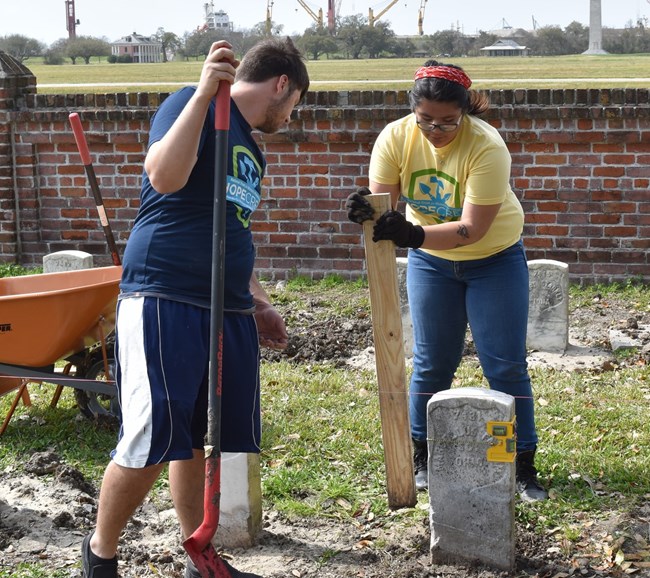
Student Conservation Association
SCA: Student Conservation Association
Jason Church: Kim, we’re here at Chalmette National Cemetery. We worked together on the HOPE project down here. I’ve noticed that your uniform is different than everyone else’s and your’s is labeled SCA. Tell me a little bit, what is SCA?
Kim Samaniego: SCA stands for Student Conservation Association. It’s basically a partnership that helps preservation through the National Park Service and Wildlife and Fishery and those types of agencies and provides youth employment mainly.
Jason Church: How did you get involved with the SCA?
Kim Samaniego: I got involved, there was an opening position at the Jean Lafitte National Historical Park and Preserve for the Centennial Year. The National Park Service, they have these great positions through SCA. They are centennial volunteer ambassadors. Through that, it just kind of broadens up the outreach for different park sites that have CVAs. One of my colleagues told me about the opening and I jumped on and applied for the position. They had me come in, started running and doing some projects with them. It’s pretty fantastic.
Jason Church: What sort of student coming out do you need to be? Coming out of college? High school? How does it work?
Kim Samaniego: There are positions form high school students to college students as well. I think the cutoff is probably around 26.
Jason Church: You’re paid through SCA. Are there other benefits besides salary?
Kim Samaniego: Yes, there are benefits. As far as payment, you get paid through SCA and also through your partnering agency that you work for. Also you can sign up for medical insurance through SCA and also sign up as an Americorps partner as well through SCA. SCA works with Americorps as well heavily. At the end of my internship as a CBA, I’ll be getting around $5,000 school bonus for Americorps.
Jason Church: What is considered a school bonus?
Kim Samaniego: The bonus at the end through Americorps, I can only use it for educational purposes, not leisurely money, just everything educational.
Jason Church: What sort of background does someone need to come in and get a job with the SCA?
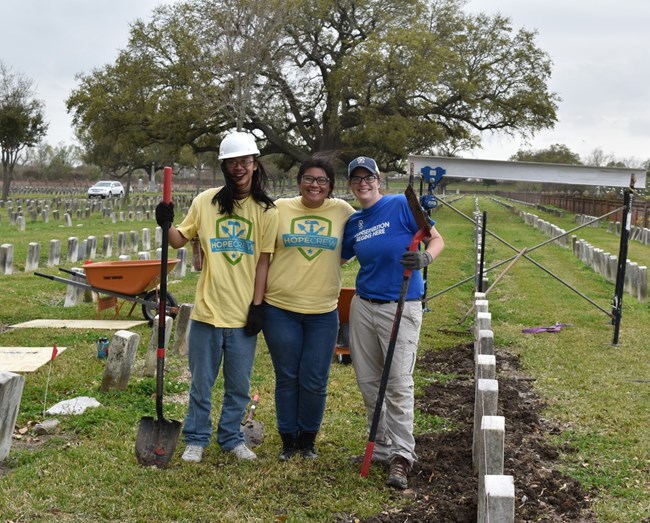
Student Conservation Association
Volunteer
Kim Samaniego: To get a job through the SCA, I did a lot of volunteer work coming into the system. It kind of depends on the person themselves where they would like to be at. Getting into SCA, you would have to apply online. Complex I want to say to try to get into the position, kind of like federal jobs. It’s a lot of getting into the backgrounds and getting into a lot of details of your experience before getting into the work position.
Jason Church: What kind of background would you recommend if someone was trying to get a job with SCA?
Kim Samaniego: With SCA, definitely doing volunteer work in your local area as far as historical preservation, cultural preservation, physical monument restoration, those kinds of works. And definitely working with the public. Anything as far as knowing how to communicate with your audience.
Jason Church: What was in your background that made you qualified for SCA?
Kim Samaniego: For the previous four years before I started working as an SCA employee, I volunteered as a living historian for the Jean Lafitte Park at Chalmette Battle Field. We had a recognizing our roots program which is a youth living history program. I got to work heavily, hands on with the interpretive rangers here. I’ve had years of interpretive training and also leadership.
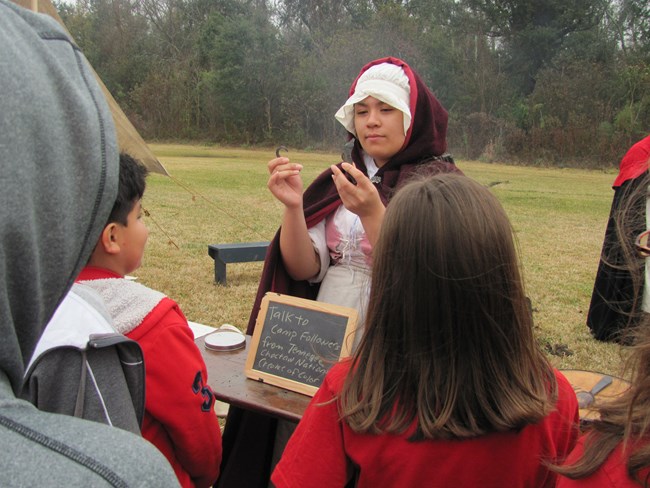
Student Conservation Association
Lauralee Buchanan: I have the same position as Kim. We both work directly under the volunteer coordinator. We assist her with organizing volunteers for events at the park to help mainly with maintenance projects, but also to work in our visitor centers, youth programs, you name it. We try and get all the divisions of our park to engage with volunteers and to use them to boost the programming and to make the park more efficient in what we do.
We also get to work with partners in the community. We partner with a lot of different community organizations, youth centers, schools, military groups, senior centers, all kinds of stuff and try and bring our volunteers to help build on their efforts and help them with special projects. We can all learn together.
Jason Church: What was it in your background that gave you to get into the SCA?
Lauralee Buchanan: I did a lot of volunteering when I was in college. I feel like I’ve always volunteered and helped in a lot of different ways. My degree is in geography and environmental studies. Like I said, I love being outside and I helped lead youth groups. In college, I worked at a summer camp. I helped run a non-profit as the volunteer coordinate for my university. I worked with people. I worked as a tour guide before in the Virgin Islands before this job and I also worked for a while in a middle school. I think they were interested in me mainly because my passions are to help people and help the environment and that I already had some leadership skills under my belt and had been in those positions before and I enjoyed doing it.
AmeriCorps
Jason Church: Now, Kim was saying that in addition to her salary, she’s also getting a bonus at the end that can go toward tuition. You’ve already graduated college. Is there any sort of benefit like that through the SCA for you?
Lauralee Buchanan: Yeah, definitely. In our position, it’s an option. It’s not required to do the AmeriCorps portion, but it is a great option to take advantage of. Just like Kim, we get a bonus. Since I’ve served one full year already, I get to put that bonus toward any education. I have some school loans left, so they’ve almost paid off the rest of my loans with one year. I only have $1,500 left in loans which is amazing for a lot of people my generation to not have that anymore. It’s nice that it’s going straight towards that, because if I’d had that chunk of money, I would not have spent it on my loans. I would have traveled or bought a new car or something. That’s really nice.
We’re in our second year now, so I think if I stay, I think two years is the max that you can do to get an AmeriCorps bonus, but if I complete a second year of this position or any AmeriCorps position, the I qualify for that same bonus the second time around. Then I won’t have any loans, so I can put it toward grad school or any sort of education.
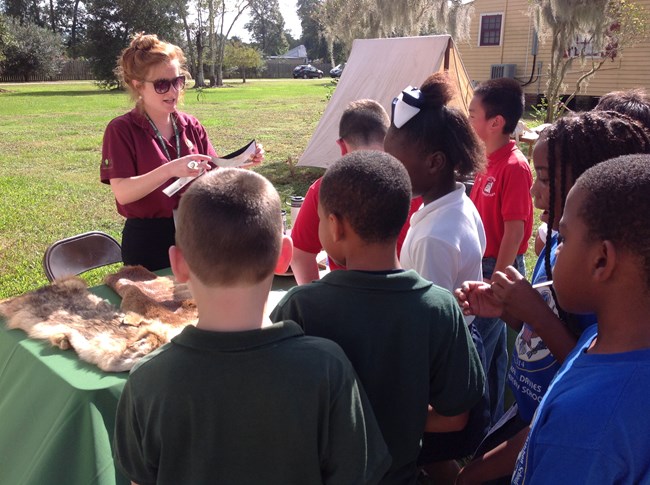
Student Conservation Association
Jason Church:Do either of you have any sort of tips for our listeners? If you’re a high school kid coming out or a college kid graduating and you’re looking at jobs in either historic preservation, that side of conservation or the national history side of conservation, any tips that you would have for them, things they should do to make themselves more job ready or to be more approachable like SCA?
Lauralee Buchanan: I’d say just get involved. If there’s something that interests you even in the slightest bit that you think you’d like to do one day, don’t wait to find an opening online to apply for that position. Go directly to the source. Ask them how they got there. Find a mentor that’s been in your position before. Ask them to guide you and help you build your resume. Ask to volunteer and ask if they can develop an internship for you. Often times, places, all sorts of different places do need help even if it’s volunteer help. That’s a good way to get your foot in the door.
Lauralee Buchanan: I’ve talked to a lot of people with the national park service that started off as volunteers in the visitor center just because they love the parks. Show that you’re interested, learn as much as you can, then hopefully a space will open up or be created for you.
Lauralee Buchanan: As far as the SCA goes, I would also say that there’s a huge list of options. It’s continuously growing from what I can see on their website. Don’t limit yourself to applying for just one particular things that you want. Your resume will get put into a pool. Once you have to complete a resume through their website which can be a little daunting, but once you start the process, it doesn’t take that long. It’s worth doing, even if you don’t get the one job that you think you have your mind set on, or the internship, then your resume is still in that pool.
Lauralee Buchanan: It will continue to be available as they create new positions. They could call on you in a month, a week, or years down the road. That’s how I got into this position because I would have never known about it, but their resume was already in their pool so they called me and it worked out perfectly because I was already in New Orleans and I wanted to stay. Put your resume on there and then see. You never know. They might just call you.
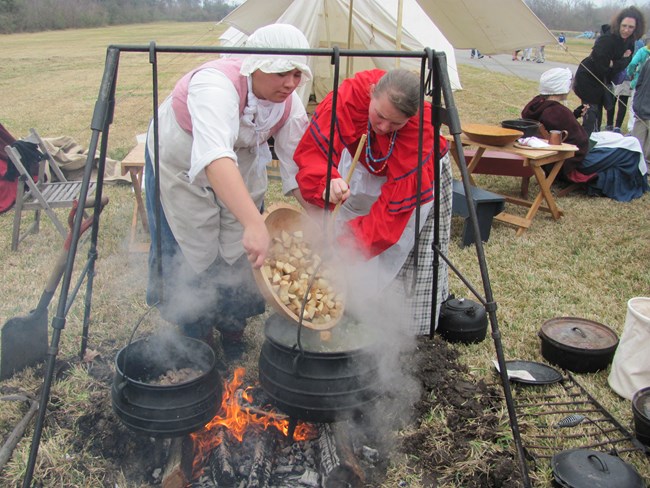
Student Conservation Association
Kim Samaniego: Definitely piggy backing on what Lauralee just said, definitely volunteer in any kind of project that you can get out into, especially in your community. That networking basis as far as you know starting it as early as you can will help you out down the line. Don’t be afraid to try new things that you haven’t necessarily experienced or necessarily thought that you wouldn’t like. I’ve tried some things along the lines that I never thought I would do as far as restoration in a cemetery. I never thought I would come out to the Chalmette cemetery and clean the headstones and realign them, but it’s pretty fascinating once you start volunteering for things and broaden up your experience.
Lauralee Buchanan: On that, add it to your resume. Every time you do something, which I forget to do and then I go back and try to get it all in there. Any experience that you have could be applicable in some sense, even if it’s just under your volunteer experience.
Jason Church: Thank you Kim. Thank you Lauralee for talking to us today. Good luck in your SCA endeavors. Especially here at Jean Lafitte and Chalmette. Hopefully we’ll talk to you both in the future at other positions maybe.
Lauralee Buchanan: Yeah, thanks Jason.
Tags
- jean lafitte national historical park and preserve
- new orleans jazz national historical park
- internships
- jean lafitte national historical park
- kim samaniego
- lauralee buchanan
- national park service
- sca
- student conservation association
- podcast
- ncptt
- preservation technology podcast
- chalmette national cemetery
